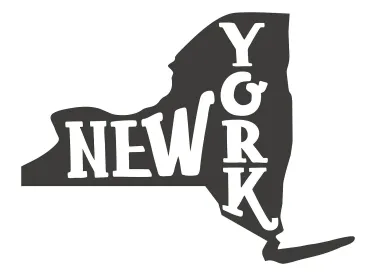The growth of private equity and other financial sponsor investments in the health care industry has led many states across the country to adopt expansive oversight authority over health care transactions. With the enactment of New York State’s budget for the State Fiscal Year 2023-2024, signed into law on May 3, 2023, the movement for more oversight in New York is coming this summer.
Starting August 1, 2023, certain “health care entities” will be required to provide the New York State Department of Health (the “DOH”) with notice of a “material transaction” at least thirty (30) days prior to the closing of the transaction. Certain information submitted to the DOH will then be posted on the DOH website, and a copy of the notice and supporting documentation will promptly be shared by the DOH with the antitrust, health care and charities bureaus of the Office of the New York State Attorney General. As discussed in greater detail below, however, a transaction that would result in a health care entity increasing its total gross in-state revenue by less than $25,000,000 would not be considered “material” and would not require notice to the DOH.
The version of the budget passed into law is less burdensome than the DOH’s original proposal from earlier this year, which would have provided the DOH with the authority to review and approve reported transactions. While not as onerous as the original proposal, the new notice and disclosure process will result in greater (1) transparency into financial investor involvement in health care entities, and (2) access to data on health care transactions in light of health equity considerations that are becoming a greater focus in the industry.
The DOH is now tasked with further defining the notice and disclosure process through regulations. We provide a summary below of the terms and applicability of the new law to help you prepare for notice and disclosures once the law takes effect.
Applicability of Notice Requirements
Pursuant to the new law, “health care entities” must provide written notice, with certain supporting documentation, of “material transactions” to the DOH.[1]
Definition of Health Care Entity
“Health care entity” is defined very broadly and includes “a physician practice, group, or management services organization or similar entity providing all or substantially all of the administrative or management services under contract with one or more physician practices, provider-sponsored organization, health insurance plan, or any other kind of health care facility organization or plan providing health care services” in New York. Insurers authorized to do business in New York and pharmacy benefit managers (“PBMs”) registered or licensed in New York are specifically excluded from the definition of “health care entity.”[2] Neither independent practice associations (“IPAs”) nor accountable care organizations (“ACOs”) are explicitly included in the definition of “health care entity,” but the formation of an ACO for the purpose of administering contracts with health plans, third-party administrators, PBMs, or health care providers is explicitly included as a “material transaction.” Further clarification will be required from the DOH as to whether transactions involving IPAs and ACOs are implicated, which could occur during the rulemaking process and be reflected in the DOH regulations that are adopted
The legislative purpose and intent of the originally proposed law indicated that New York desires to expand the State’s oversight into transactions involving management services organizations (“MSOs”) in light of the “proliferation of large physician practices being managed by entities that are investor-backed.” Given the New York requirement that certain entities providing medical services, including physician practices, be owned by licensed professionals (referred to as the corporate practice of medicine prohibition), private equity and other financial sponsor investments into physician practices are typically structured through contractual relationships with MSOs. The State indicated in its original proposal its interest in “track[ing] or monitor[ing] the impact of these transactions on cost, quality, access, equity, and competition.”
Definition of Material Transaction
The definition of “material transaction” includes any of the following types of transactions, whether occurring in a single transaction or in a series of transactions within a rolling twelve (12)-month period, that exceed certain materiality thresholds (which will be further defined by regulation but shall include factors relating to changes in revenue as described below):
- A merger with a health care entity;
- An acquisition of one or more health care entities, including but not limited to the assignment, sale or conveyance of assets, voting securities, membership, partnership interest or the transfer of control (which is defined to include the ability to direct management and administrative functions by contract);
- An affiliation agreement or contract between a health care entity and another party; or
- The formation of a partnership, joint venture, ACO, parent organization, or MSO for the purpose of administering contracts with health plans, third-party administrators, PBMs, or health care providers.[3]
Clinical affiliations of health care entities for the purpose of collaborating on clinical trials or graduate medical education programs, transactions already subject to review under Articles 28, 30, 36, 40, 44, 46, 46-A, and 46-B of the Public Health Law and “de minimis transactions” are excluded from the notice requirement.[4]
A “de minimis transaction” is a transaction, or series of related transactions, that results in a health care entity increasing its total gross in-state revenue by less than $25,000,000.[5] The law does not include the manner in which gross in-state revenue growth is to be calculated, and regulations will need to provide more clarity.
Required Contents and Support of Notices
Notices must be submitted by health care entities at least thirty (30) days prior to the anticipated closing date for the applicable transaction and must include the following information, as well as supporting documentation as required by the DOH:
- Names of the parties involved and their current addresses;
- Copies of any definitive agreements governing the terms of the material transaction, including pre- and post-closing conditions (note that it is unclear at this time whether confidential terms of the transaction, such as purchase price or enterprise value may be redacted);
- All locations where health care services are currently provided by each party, as well as the in-state revenue generated at such locations;
- Any plans to reduce or eliminate services and/or participation in specific plan networks;
- Anticipated closing date; and
- A brief description of the purpose and nature of the transaction, including:
- the anticipated impact of the transaction on cost, quality, access, health equity, and competition in the impacted markets, which may be supported by data and a formal market impact analysis; and
- any commitments by the parties to address anticipated impacts.[6]
Using the information submitted in the notice process, the DOH will then post on its website:
- A summary of the proposed transaction;
- An explanation of the groups or individuals likely to be impacted by the transaction;
- Information about services currently provided by the health care entity, commitments by the health care entity to continue such services and any services that will be reduced or eliminated (note that it is unclear at this time whether this information will be required of each party involved in the transaction as the text simply refers to the “health care entity” – further regulation is needed to clarify what information will be disclosed on the DOH website); and
- Instructions for how to submit comments.[7]
The new law provides that the supporting documentation submitted to the DOH will not be subject to public disclosure under the New York State Freedom of Information Law, but it is unclear which elements of the submitted documentation will be disclosed in the DOH’s public summary of the disclosed transaction. The parties must also provide the DOH with notice of the closing for reported transactions, and the DOH will be prescribing the form and manner of such closing notice.[8] The notice process, including the contents thereof and the supporting documentation, is subject to further refinement by forthcoming DOH regulations.
Potential Penalties
The new law provides the DOH with the power to impose civil penalties under Section 12 of the Public Health Law, which contemplates penalties of $2,000 per violation. Those penalties may be increased to $5,000 for subsequent violations if the violations pose “a serious threat to the health and safety of an individual or individuals.”[9] The new law also provides that each day that a reportable transaction goes unreported will constitute a separate violation.
Further Considerations
Organizations that operate health care entities, or that are looking to enter into material transactions with health care entities, in New York need to pay close attention to this new notice requirement and the forthcoming regulations to be promulgated by the DOH. The Sheppard Mullin Healthcare Team will be keeping a close eye on further regulations and developments.
Listen to this Post
FOOTNOTES
[1] NY Pub. Health L. § 4552.
[2] NY Pub. Health L. § 4550(2).
[3] NY Pub. Health L. § 4550(4)(a).
[4] NY Pub. Health L. § 4550(4)(b).
[5] Id.
[6] NY Pub. Health L. § 4552(1).
[7] NY Pub. Health L. § 4552(2).
[8] NY Pub. Health L. § 4552(3).
[9] NY Pub. Health L. § 4552(4); see also NY Pub. Health L. § 12.





 />i
/>i
